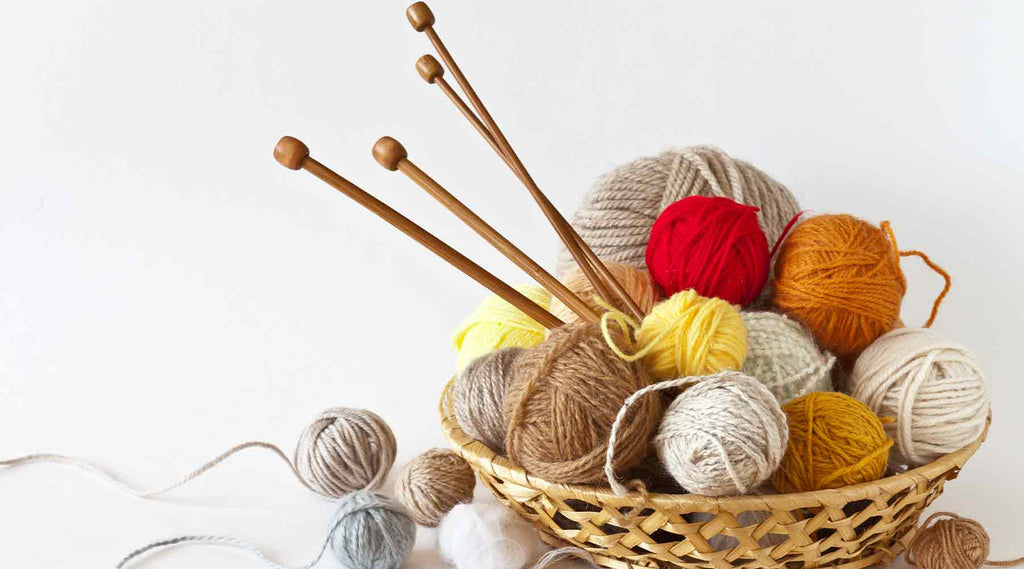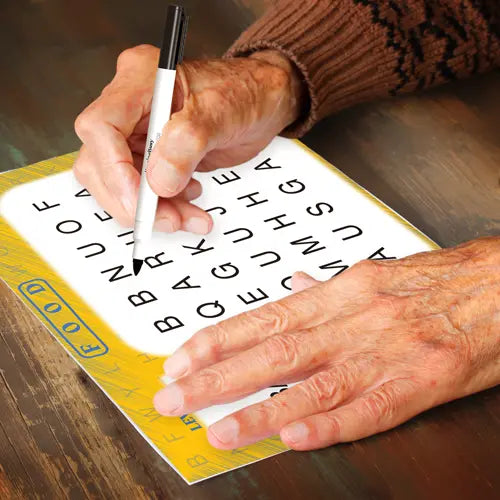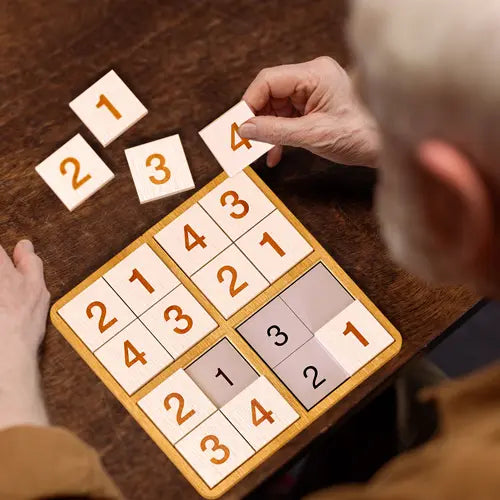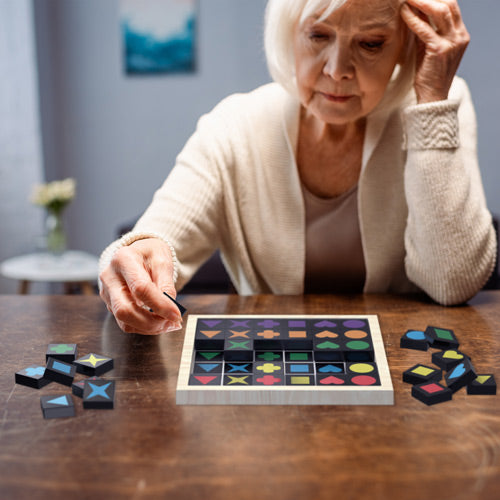
In our "The Box is Ticked" article, we talk about the importance of drawing on a dementia patients past interests to engage the person, even if they can no longer do the activity. In this article, we talk about knitting for people with Alzheimer's or dementia.
Knitting is a popular pastime but often family doesn’t even bother to check this box on the dementia care Interests Checklist because they have decided that the person can no longer complete the knitting projects that they were able to do in the past. That may be true, but that doesn’t mean that we can’t find ways to tap into the person’s interest to enable them to re-connect with something that was pleasurable for them.
REMEMBER...
The point is not necessarily for the person with demen tia to start knitting again. It is to draw on the person's interest to engage them in a meaningful way.
In a facility, one way to do this is to create a “Knitters' Circle” of people who were interested in knitting, crocheting, rug hooking and so on. At home it is much easier because you can do it one-on-one. The idea is not necessarily to knit (although they may, as described in the last activity), but rather to talk about the craft, tools and patterns. In a facility this can be implemented as a weekly small group program on a set day, ideally in the early afternoon when creative activities are generally best received. At home, the important thing is to develop a routine of doing the activity at the same time and day each week.
Start by encouraging conversation about knitting.
TYPES OF QUESTIONS TO ASK:
- What type of projects did they work on - baby clothes, dish cloths, afghans, hats & mitts, socks? Chances are that one type of project was their “signature”. Maybe a baby blanket for each grandchild, sweaters for all the children as they were growing up, baby clothes for their church bazaar or hats, mitts and/or socks for everyone.
- What type of wool or yarn did they like best - super wash, acrylic, angora, cotton, chunky, verigated?
- Did they ever spin their own wool?
- Have they every dyed wool?
- Did they also crochet, weave, do rug hooking or macramé?
- Find knitting patterns and bring them in – there are a lot of free patterns on the internet that can be printed, you may be able to borrow someone’s stash of old patterns, magazines or pattern books (see our article on “Barriers to Making Change” for ideas on finding items to be donated) or borrow them from the library.
- Create a project for the person with dementia to organize the patterns and “plan” future knitting projects – what colour would be nice, what type of wool, etc.
- Bring in a collection of wool and yarn – different weights, textures and colors. If you have them, bring in tools to make skeins of wool - a ball winder or niddy-noddy or start them off winding balls of yarn. Encourage them to pick their favorite.
- Bring in a collection of different types of knitting needles – circular, double pointed, short and long as well as some crochet hooks and the kind used for rug hooking. Talk about which they used and projects that they did with each.
- You may find that the person, or some members of the group may want to give knitting (or crocheting, or whatever their “specialty”) a try. Before starting, be sure that you know what type of needles and yarn they are most comfortable with and have that available. In advance of the activity, cast on and knit a few rows so they are set up and they can do plain knit in short rows of about 20 stitches. Suggest that you will be working on knitting squares to be sewn together for a blanket and that each person can help out by knitting a few rows at a time. You will probably find that that knitting one or two rows is enough concentration for the person. If someone isn’t comfortable knitting, encourage them to participate in other ways such as organizing the wool, choosing the next color, etc.




